August 15th, the height of summer, at midday. I’m trying to get to Aghios Georgios beach before the 2 PM bus arrives so that I can pick a space in the shade of the tamarisk trees. It’s not a matter of whether your towel will fit; in Sikinos, you can fit wherever. It’s exceedingly rare not to find a table at a restaurant, and the same is true for bars. The bus is nearly empty. There is always parking on the beaches and in the Hora. The worst-case scenario is that you have to wait in line behind two or three individuals at the mini market.
People often ask, “Is it busy on the island?” There is no simple way to answer that. What is the yardstick? You realize how crowded it is when the ferry arrives in Alopronia; the kids take their positions on the pier to dive into the ferry’s wake, which is how they bid goodbye to the boat in Sikinos. About 50 people, who you only see again at the Panagia festival, have what will be their most lovely summer memory. And you wonder where they are when they aren’t here, because Sikinos isn’t big and doesn’t have many beaches or villages. It is located between Ios and Folegandros and covers 42 square kilometers, with a single 8-kilometer road, three easily accessible beaches, and practically one settlement. There are only about two hundred permanent residents. Last summer, it was estimated that residents and visitors totaled 2,000, which is the island’s maximum capacity.
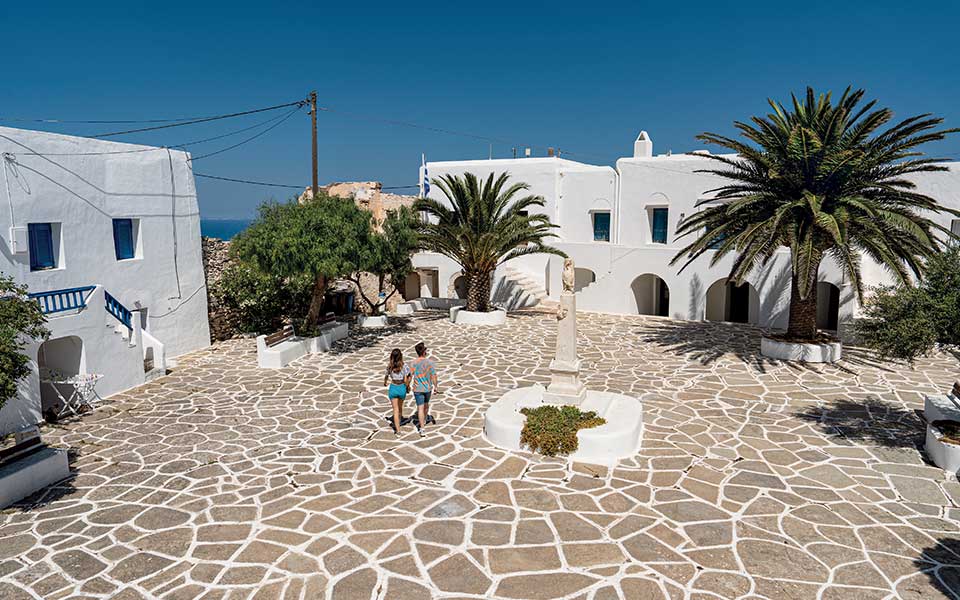
© Thodoris Markou
I remember the first time I visited Sikinos fifteen years ago. I discovered women creating handmade beeswax candles, a beekeeping cooperative, and people signing up on long waiting lists to keep the icons for the island’s holy festivals (Pantanassa, Holy Cross, Presentation of the Virgin Mary, Zoodochou Pigis) in their homes for a year. In exchange, they offered to organize the festival. Children are added to the Pantanassa icon list as soon as they are born and typically become festival organizers in their 30s or even 50s; the privilege is also hereditary. Women continue to make festival candles and church chandeliers, and the cooperative thrives, as beekeeping is the primary occupation of the island’s population.

© Olga Charami
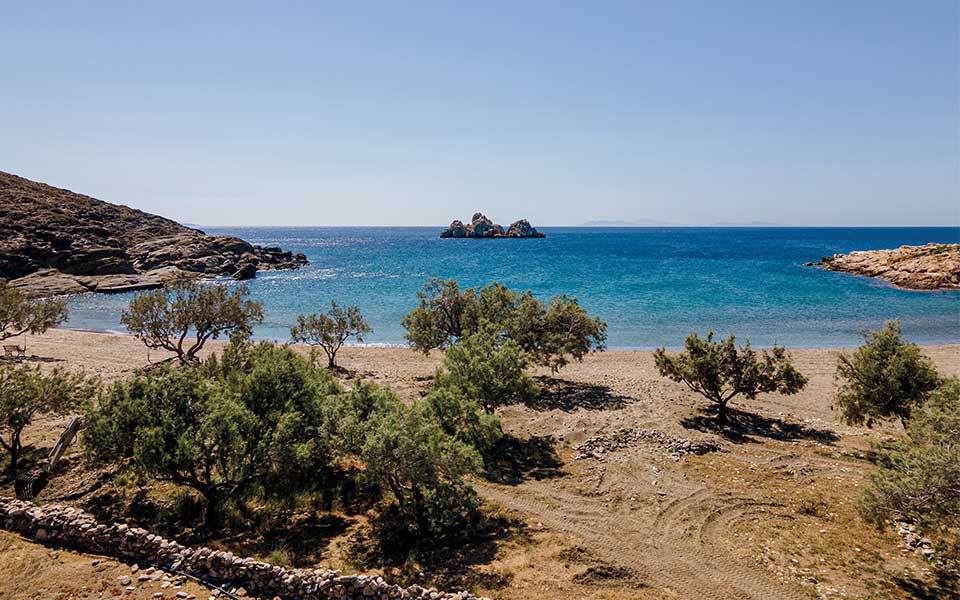
© Thodoris Markou
Sikinos’ geomorphology has historically made it unsuitable for settlement and migration, which is why it was always described as sparsely populated or as a place of exile. Could this be why it remains authentic and has dodged the effects of mass tourism? Is it because of its few attractions and difficult access to the beaches or to the residents’ efforts? It’s most likely a combination of the two, as the local administration appears to be learning from the mistakes of other islands.
Construction is strictly controlled here, and businessmen are not allowed to lease the beaches. The municipality equips the beaches with a few straw umbrellas, and swimming pools are not permitted. In truth, the Municipality of Sikinos tries everything it can to prevent the negative effects of overdevelopment and overtourism. Not only that but, in addition to the Hellenic Society for the Environment and Culture’s promotion of the island’s trail network, the Sikinos Association and the Museum of Cycladic Art are conducting a botanical study, which has already identified two indigenous plant species.
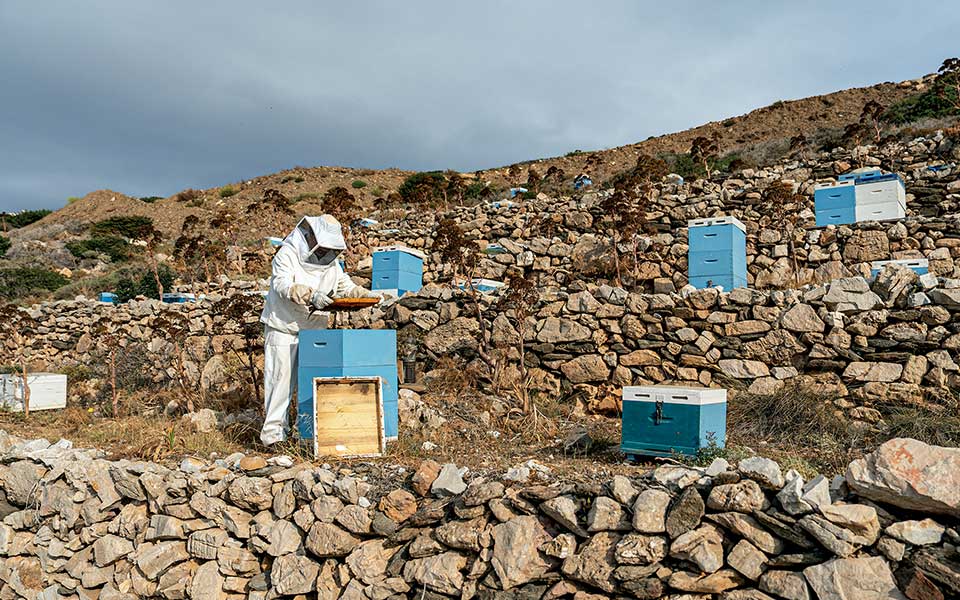
© Thodoris Markou
Of course, with the surrounding islands profiting from tourism, not all residents share the same sentiment, prompting the question: Is Sikinos resisting or simply not threatened? The Sikinians have seen the cheese; let us hope they also notice the trap.
Things on this Cycladic island are simple and on a human scale. Within two days, you’ll know when the bakery runs out of cheese pies, which dogs bark as you pass by, what time to go to snatch the place under the large tamarisk tree at Dialiskari, when Evi cooks orange pie at Soulatso, and which lane leads to Hora’s windmill. When you visit the main square, you are surprised by the (planned) lack of stores; instead of a mess of tables and chairs, you are met with an incredible setting fit for a movie shoot.
This is where the main August 15th festival and many of the Little Islands Festival events take place, including documentary screenings, installations, and more. Poetry Days will be hosted there for the first time this year, in honor of Nobel laureate Odysseas Elytis. You can spend your nights unwinding with cocktails at Anemelo, exploring books at the Signatory Bookstore, or shopping for distinctive souvenirs at Articas. If you make it to Themonies, the after-hours club popular with locals after the bars close, you’ll be well on your way to being a Sikinian.
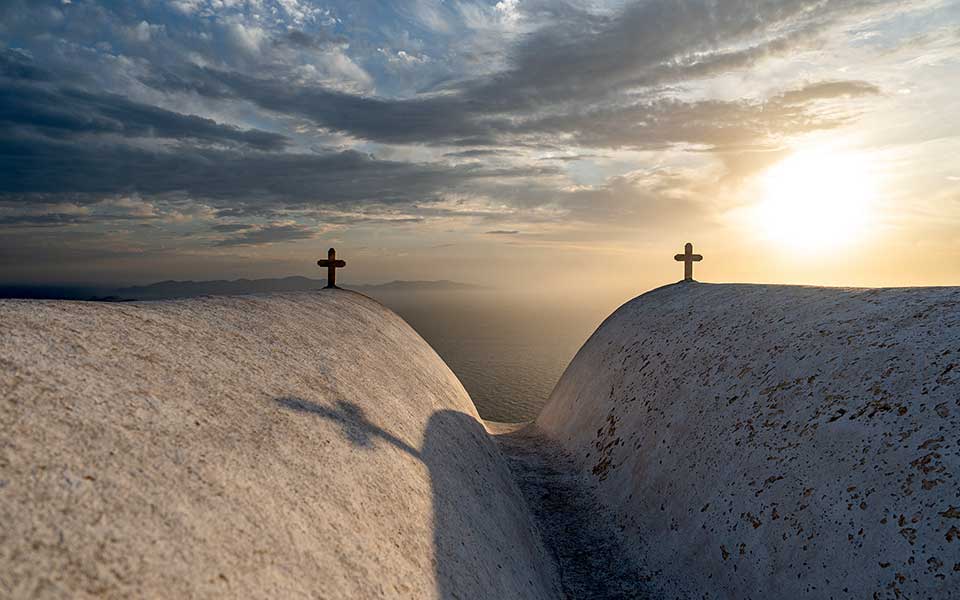
© Thodoris Markou
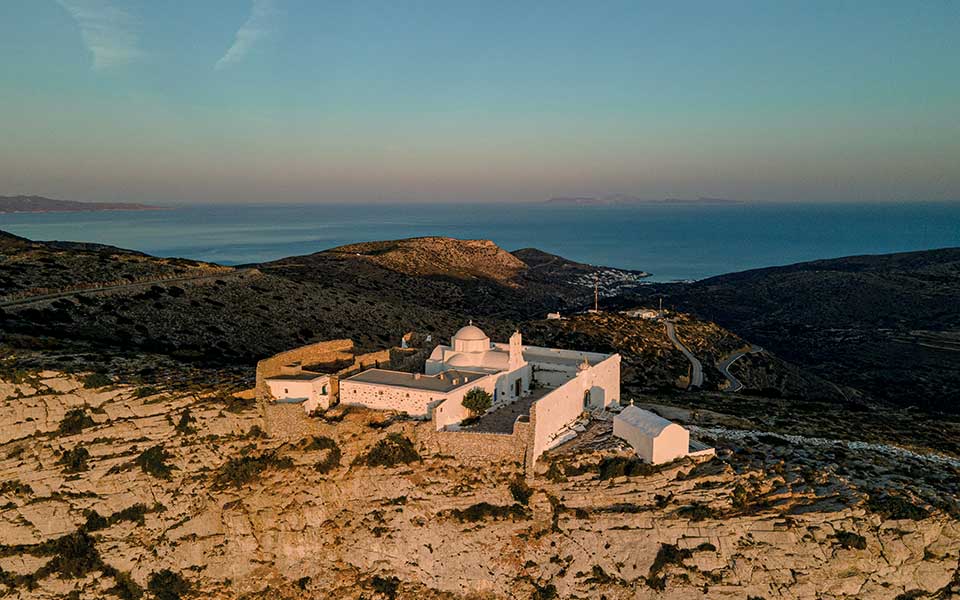
© Thodoris Markou
The days are spent swimming in the crystal-clear sea, listening to the cicadas, and indulging in endless laziness. There aren’t many things to see or do on Sikinos, but there are a handful that are worth trying. For example, the temple of Episkopi, a one-of-a-kind monument in the middle of nowhere that was restored by the Cyclades Antiquities Ephorate and received the Europa Nostra European Cultural Heritage Award, is reason enough to visit the island. “I don’t think it attracted more people; it gave someone who already wanted to come another reason to visit the island,” says guard and unofficial guide Kostas Platis, who claims that 4,500 individuals (25% of whom were foreigners) visited Episkopi last year.
He speaks enthusiastically about the restoration process, as well as the villagers’ memories of finding evidence of riches and secret crypts among the ruins. The structure was built as a Roman tomb in the 2nd-3rd centuries and converted into a Christian temple in the 17th century to honor the Dormition of the Virgin Mary. While the repair was underway in 2018, the unique grave of Neikous was discovered, well-hidden and intact in the church’s double wall, in contrast to the two robbed crypt tombs. The Municipality of Sikinos aims to transform the old school from 1900 into a museum, bringing important grave discoveries back to the island.
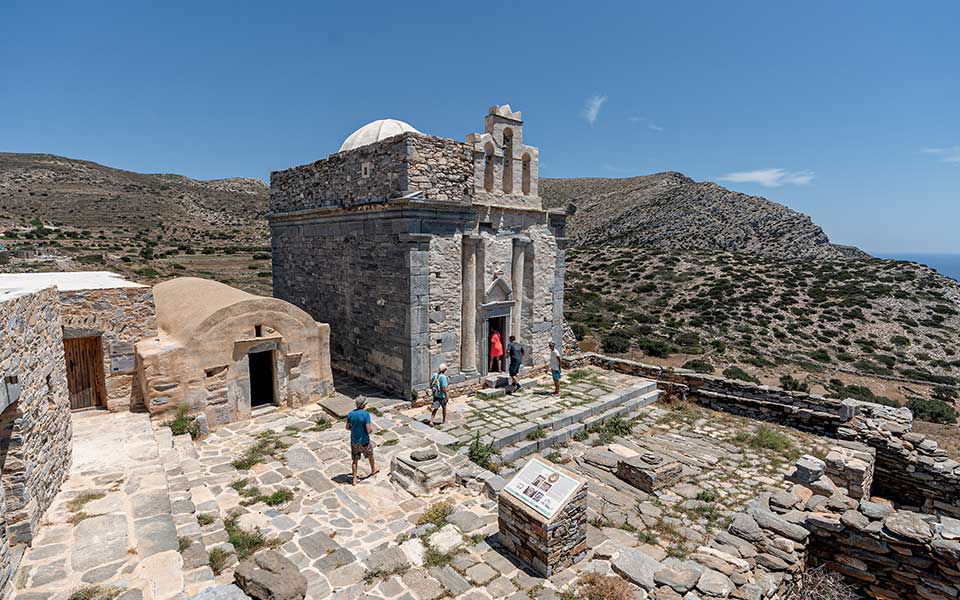
© Thodoris Markou
A visit to the now-famous winery of Giorgos Manalis, a dedicated islander who dared to invest here when it seemed unthinkable back in 2008, is likely to be an unforgettable experience. He worked as a fisherman, gas station owner, hotelier, and community president before becoming a winemaker. His patio is what we all fantasize about during the winter: a deck overlooking the Aegean where your sight can wander freely, with only a few islands in the distance providing some form of focus. With the vineyard at your feet turning gold in the rays of the setting sun, and the superb wines from the old, organically produced types (Assyrtiko, Aidani, Monemvasia, Mavrotragano, Limnio) in your glass, you feel like you are in the right place at the right time.
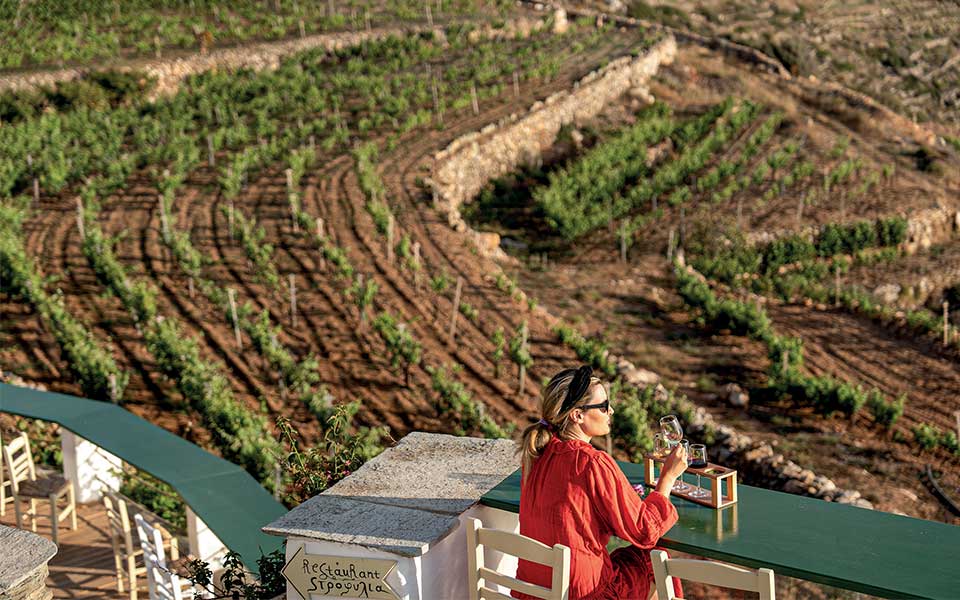
© Thodoris Markou
However, there are other things to do in Sikinos that are equally appropriate for this time of day, like climbing from Hora to the Monastery of Zoodochos Pigi. The stone-paved path winds up the hillside, providing a breathtaking view of the sea and islands. You climb, mesmerized by the golden light that bathes the chapel of Panagia Pantochara, until you reach the monastery, a place of legends and heroic stories, which was built in 1775 and is now home to a single nun. From there, you can see Hora, which is worth exploring fully, as well as Horio, a quiet village that served as a place of exile during the Metaxas dictatorship and was later restored by foreigners.
Others hike along one of the 70 kilometers of trails that crisscross the Cycladic landscape, with its terraces, vineyards, and bee gardens. Many people choose to swim at Alopronia, which has a large, family-friendly beach, while others prefer to stay on the beaches of Aghios Georgios and Dialiskari, which are accessible by vehicle (Malta, Santorineika, Aghios Panteleimonas, Karas, Agios Ioannis require hiking or a boat ride). The darkness falls early on the eastern side of the island, with Santorini’s faint outline visible in the distance. Visitors to Sikinos are happy to see it from a distance. Once again, they believe they are in the right place at the right time.












